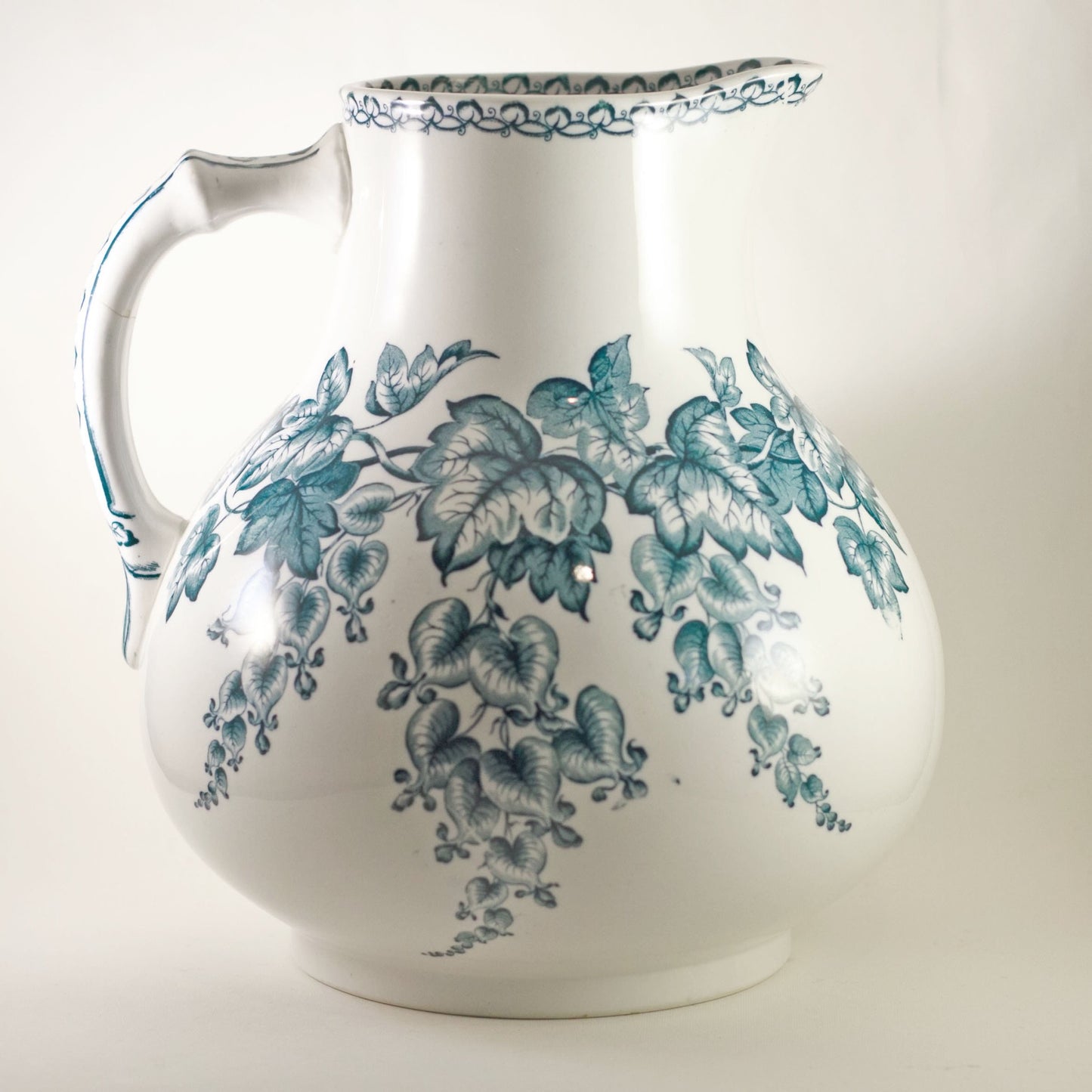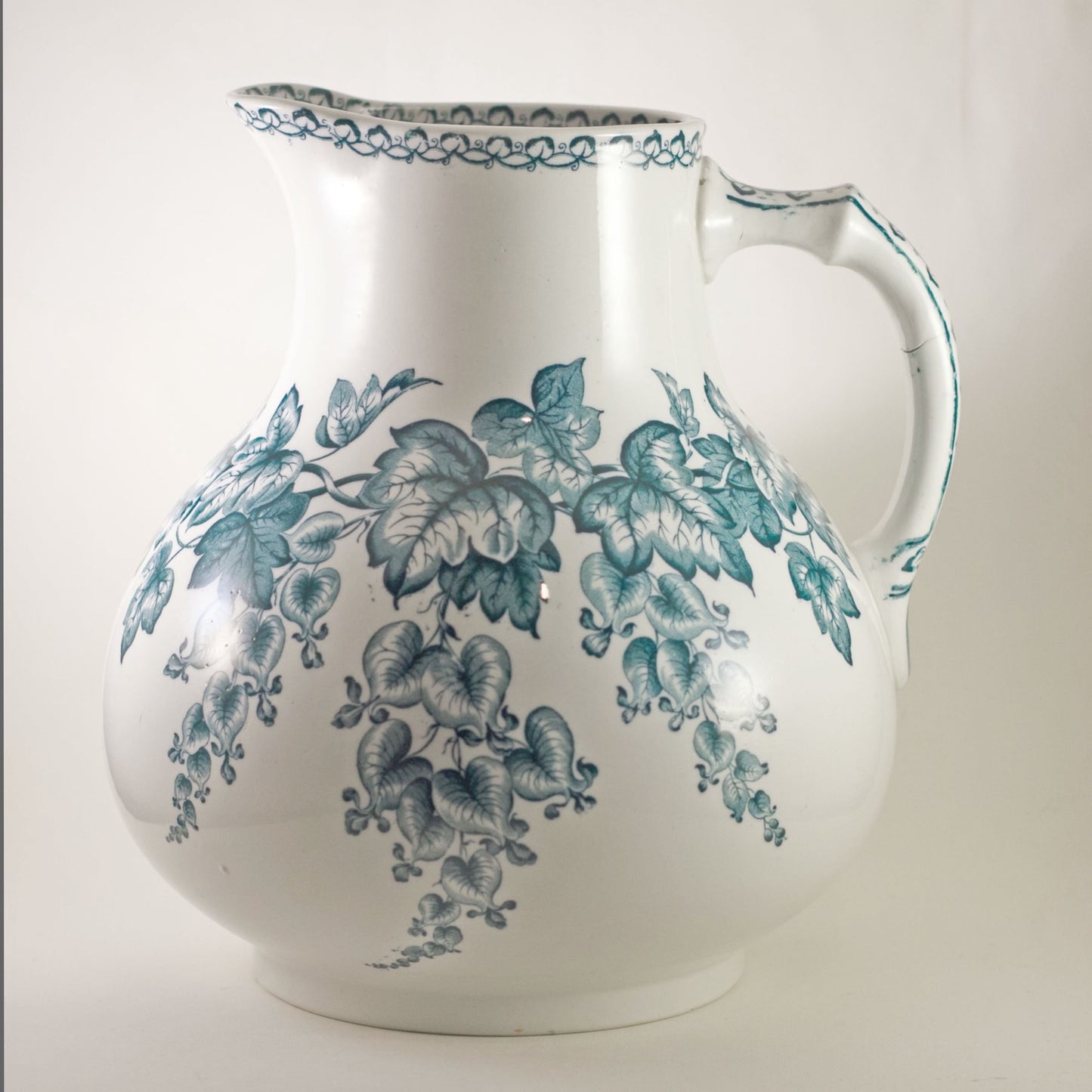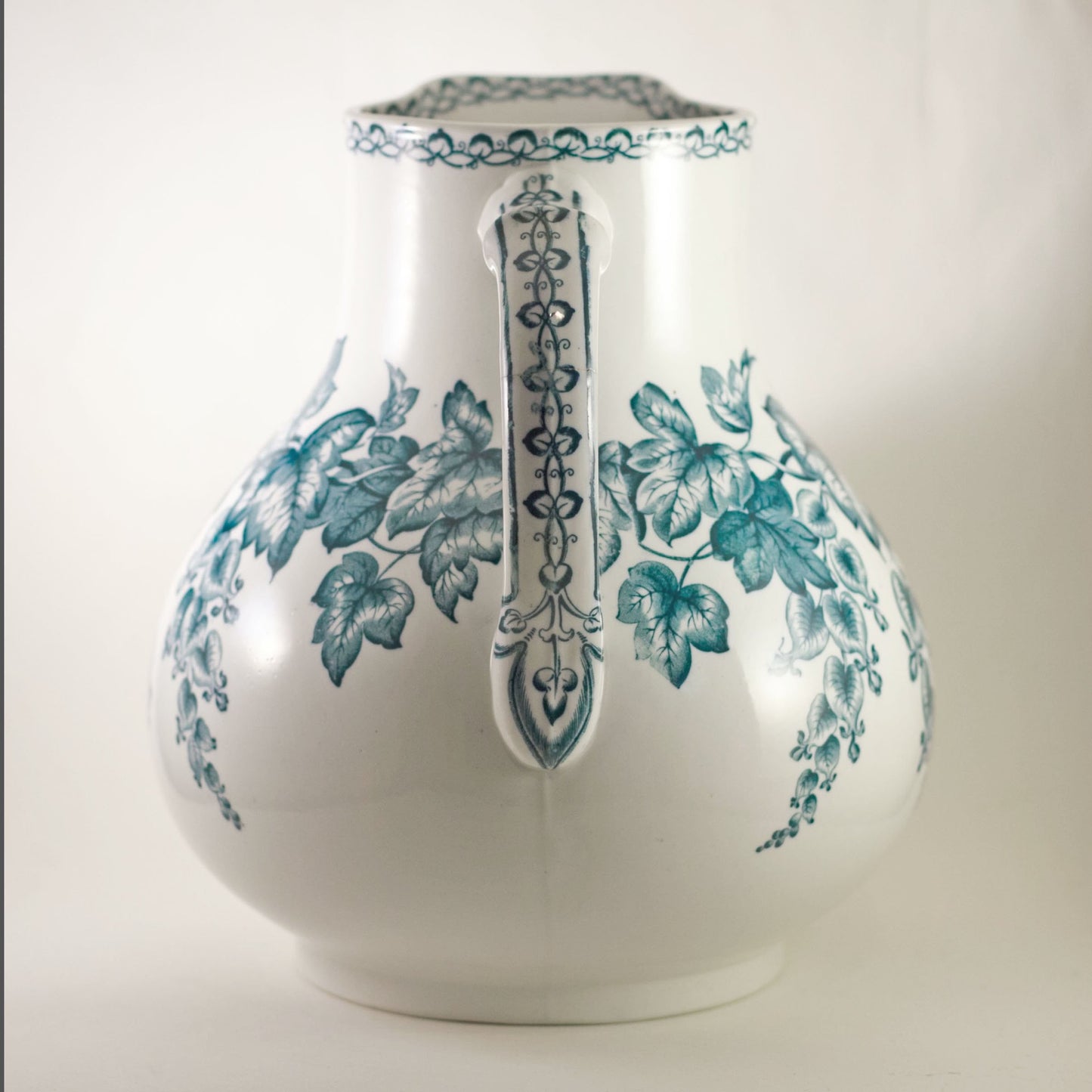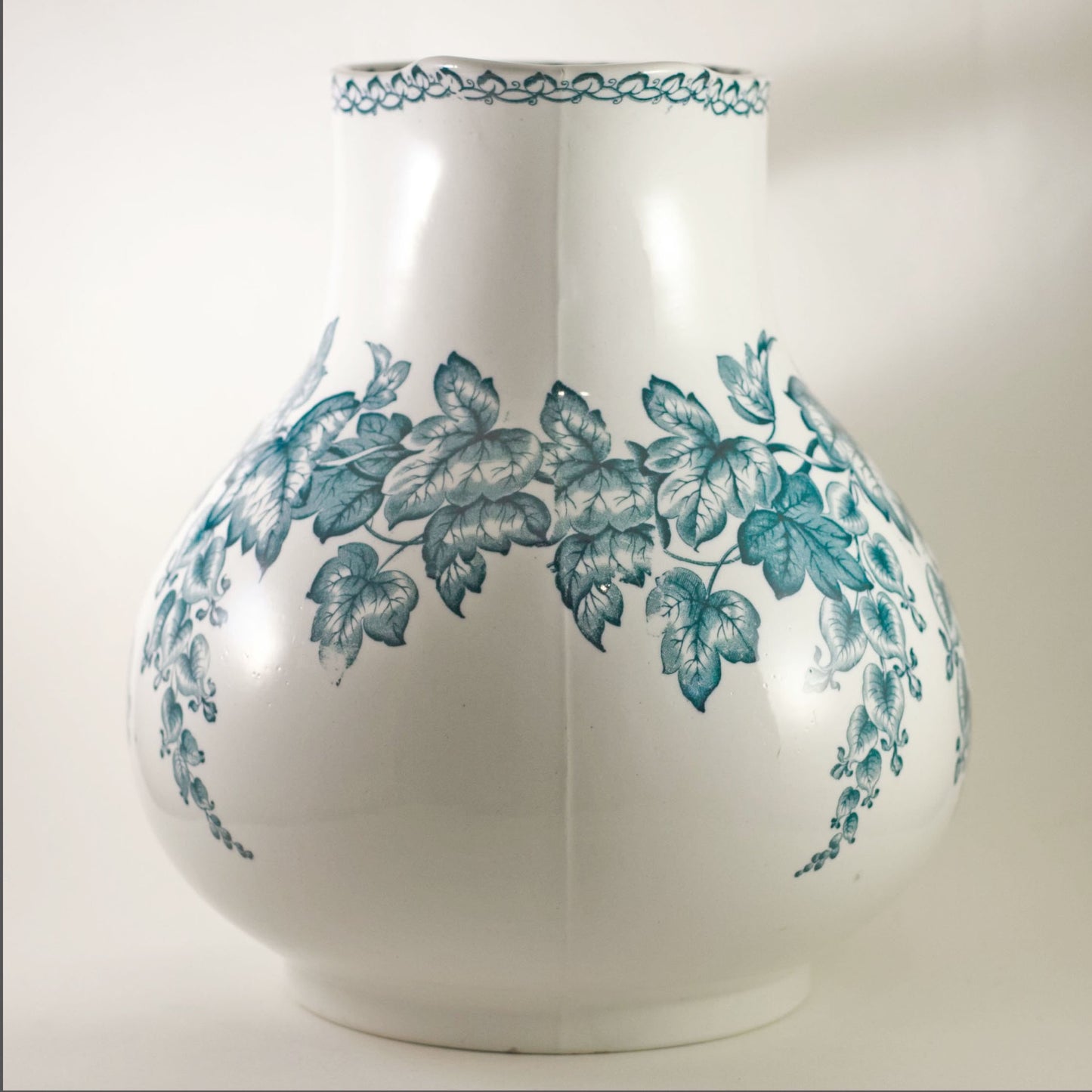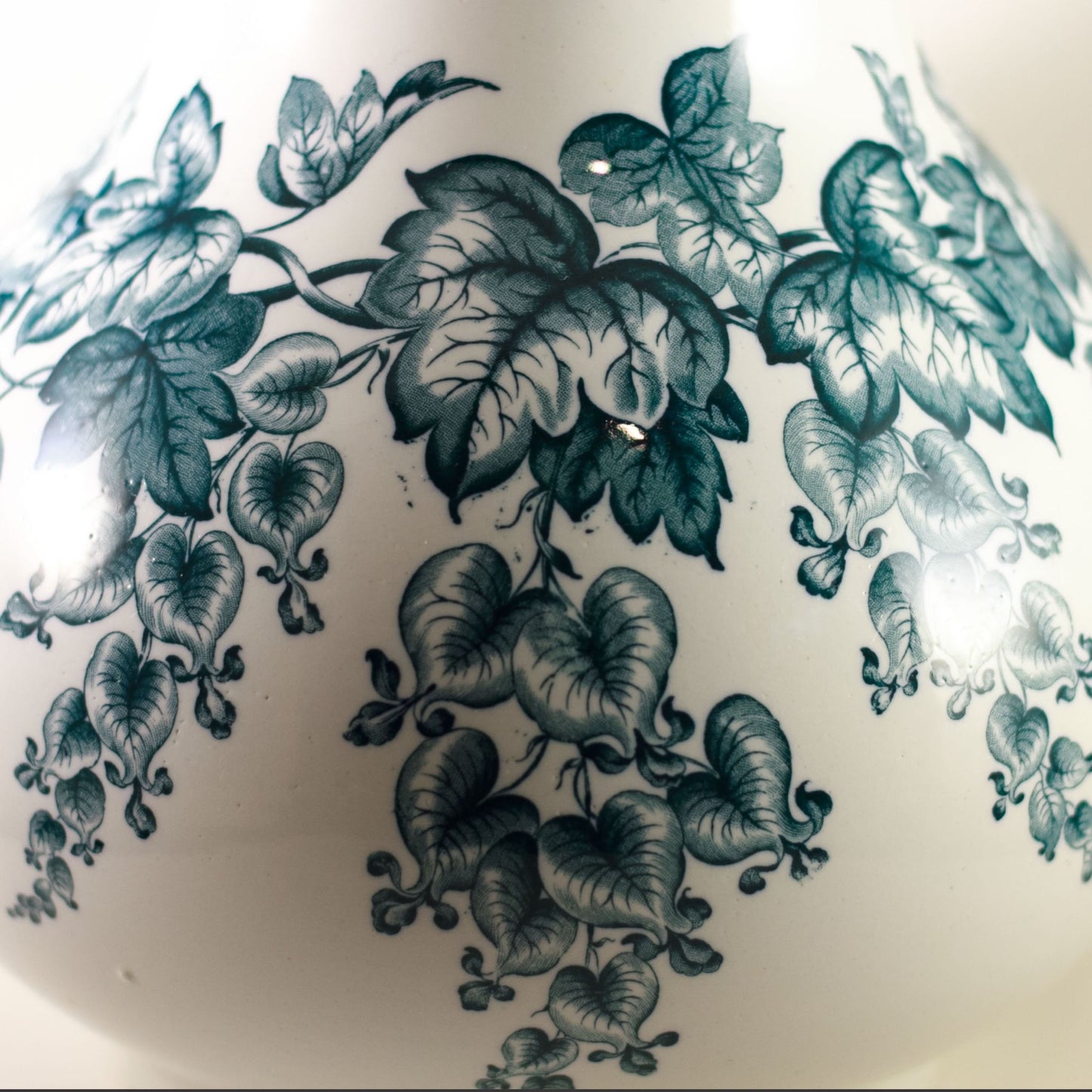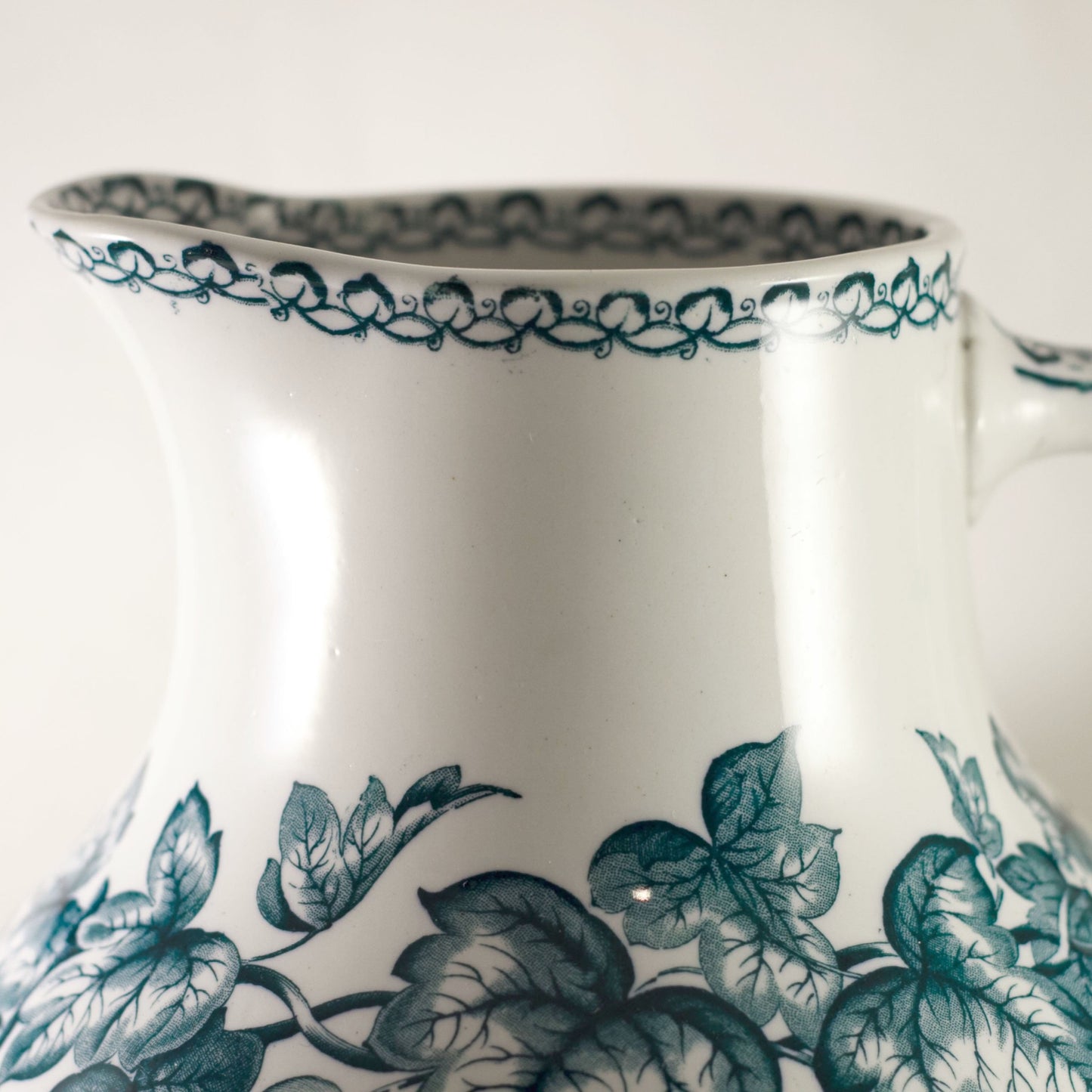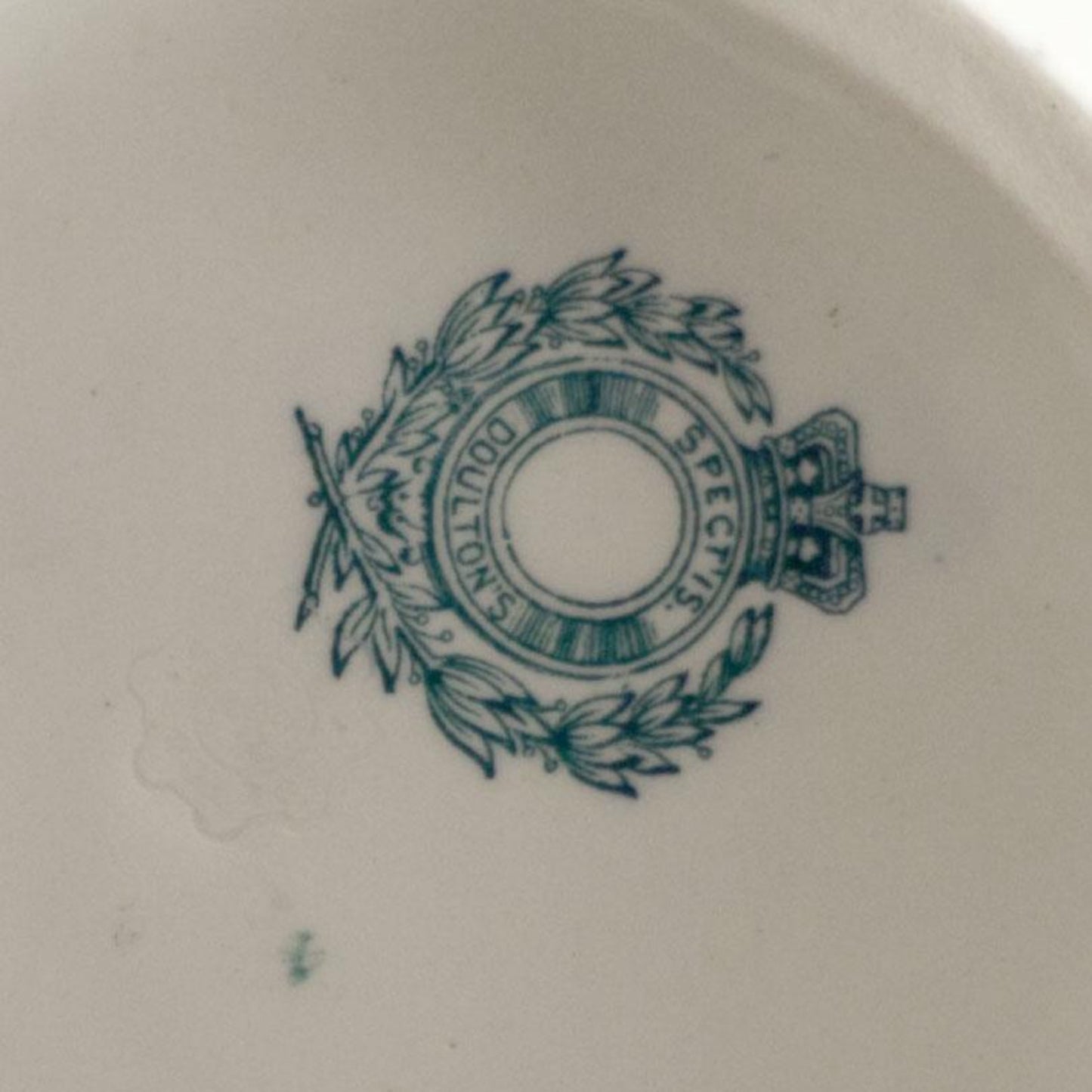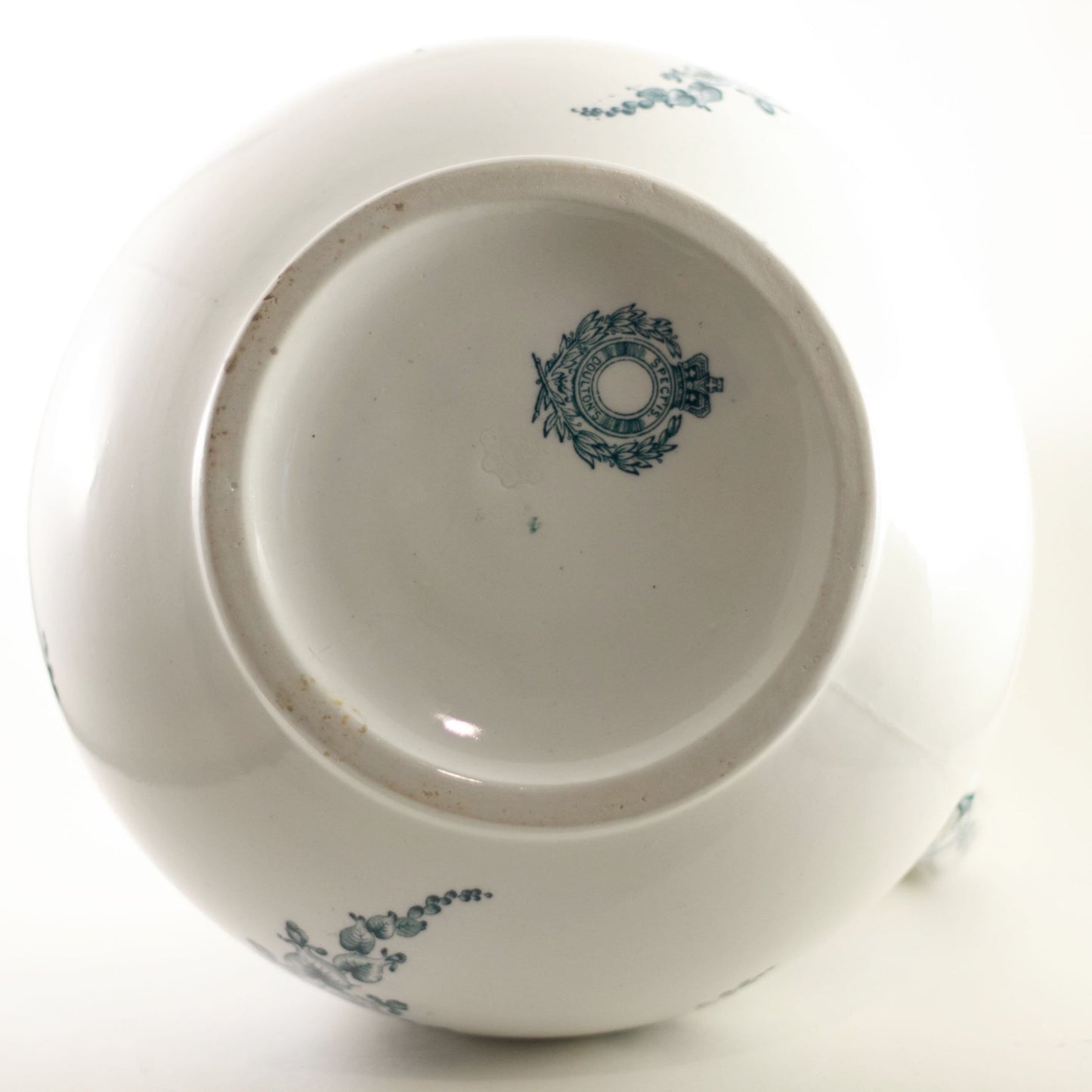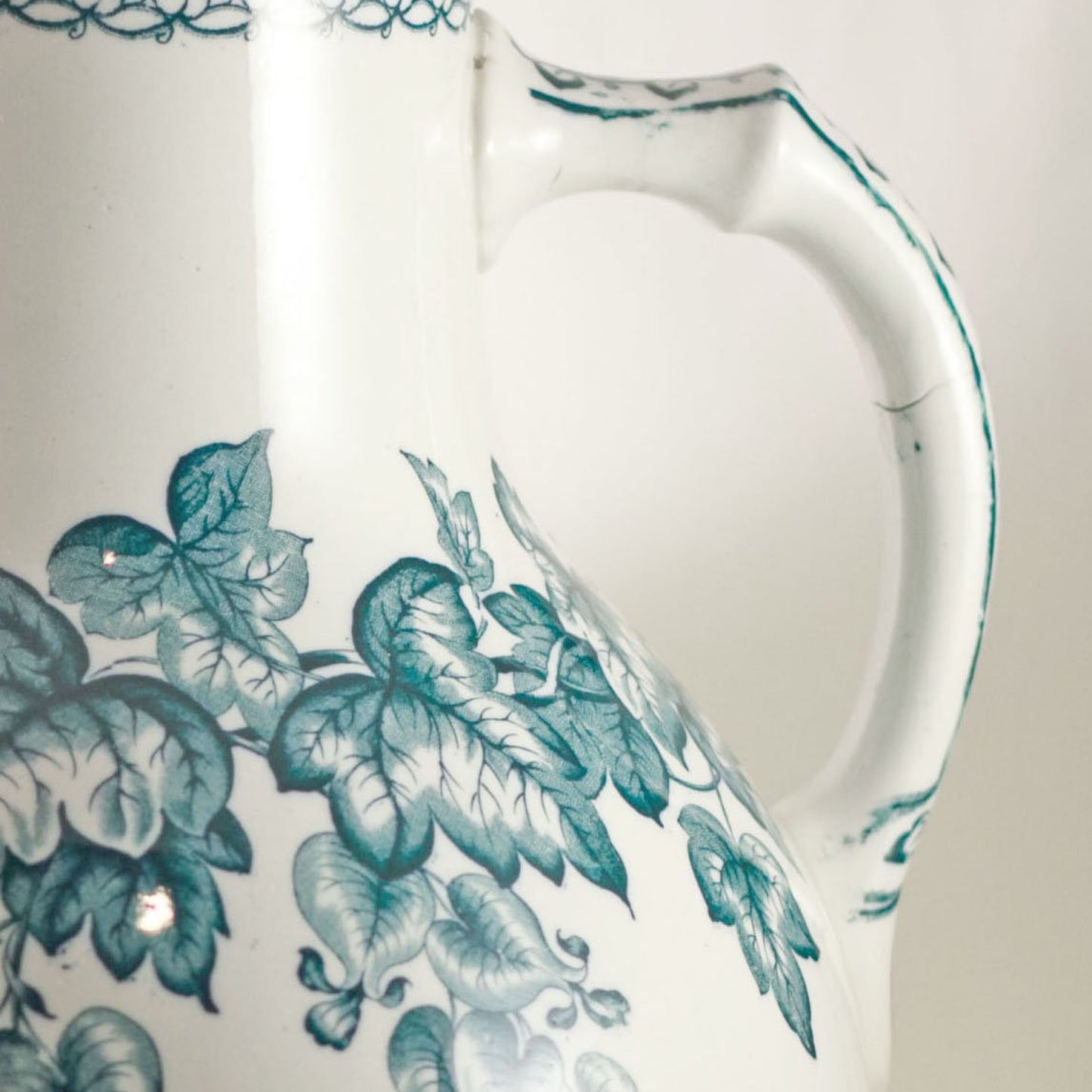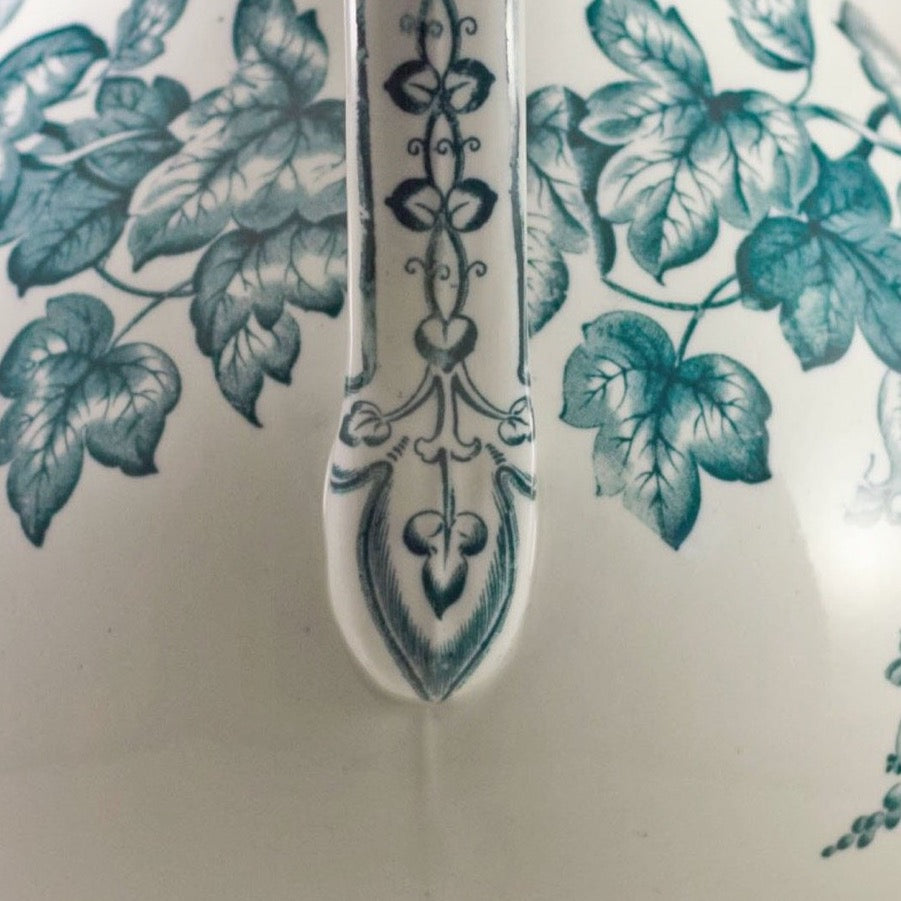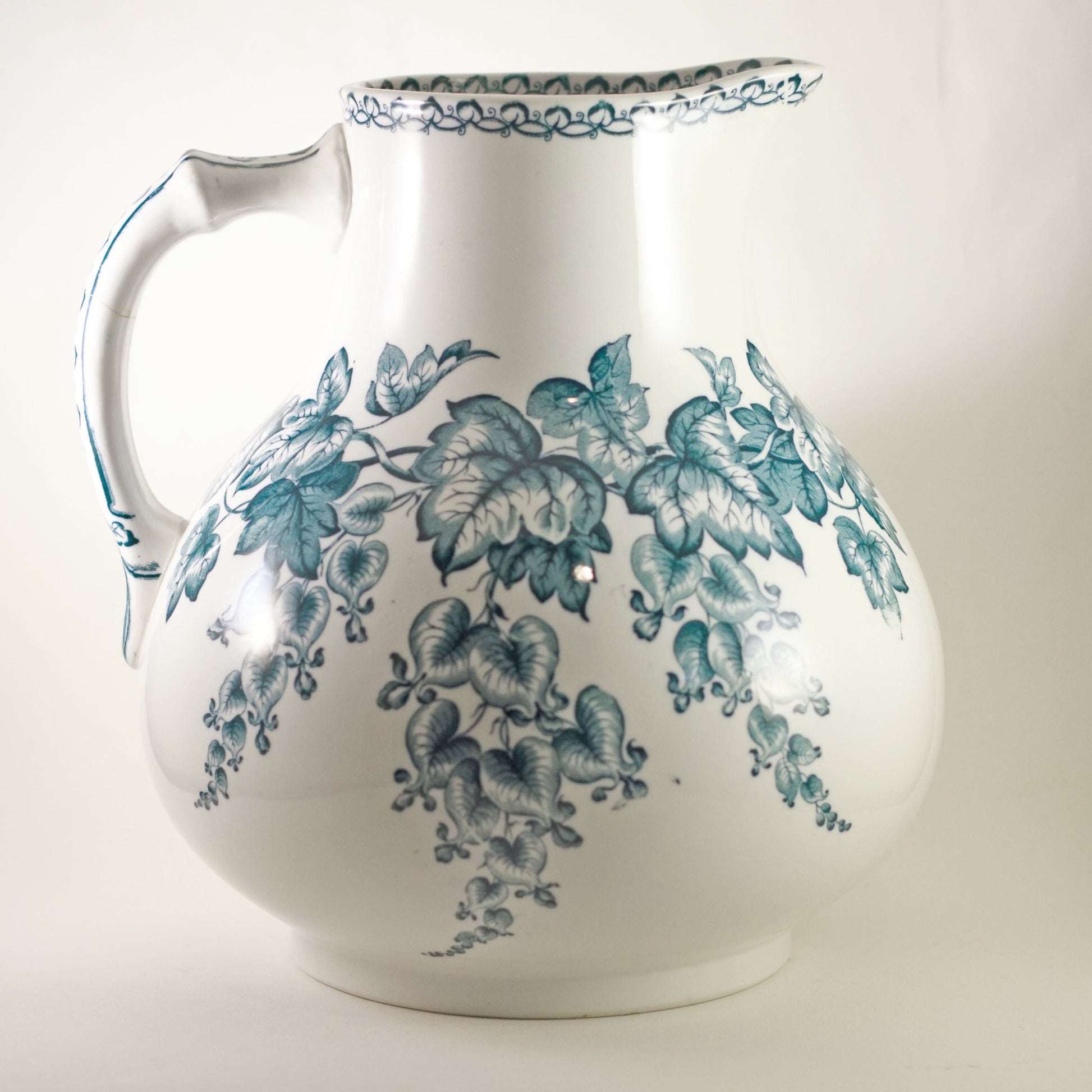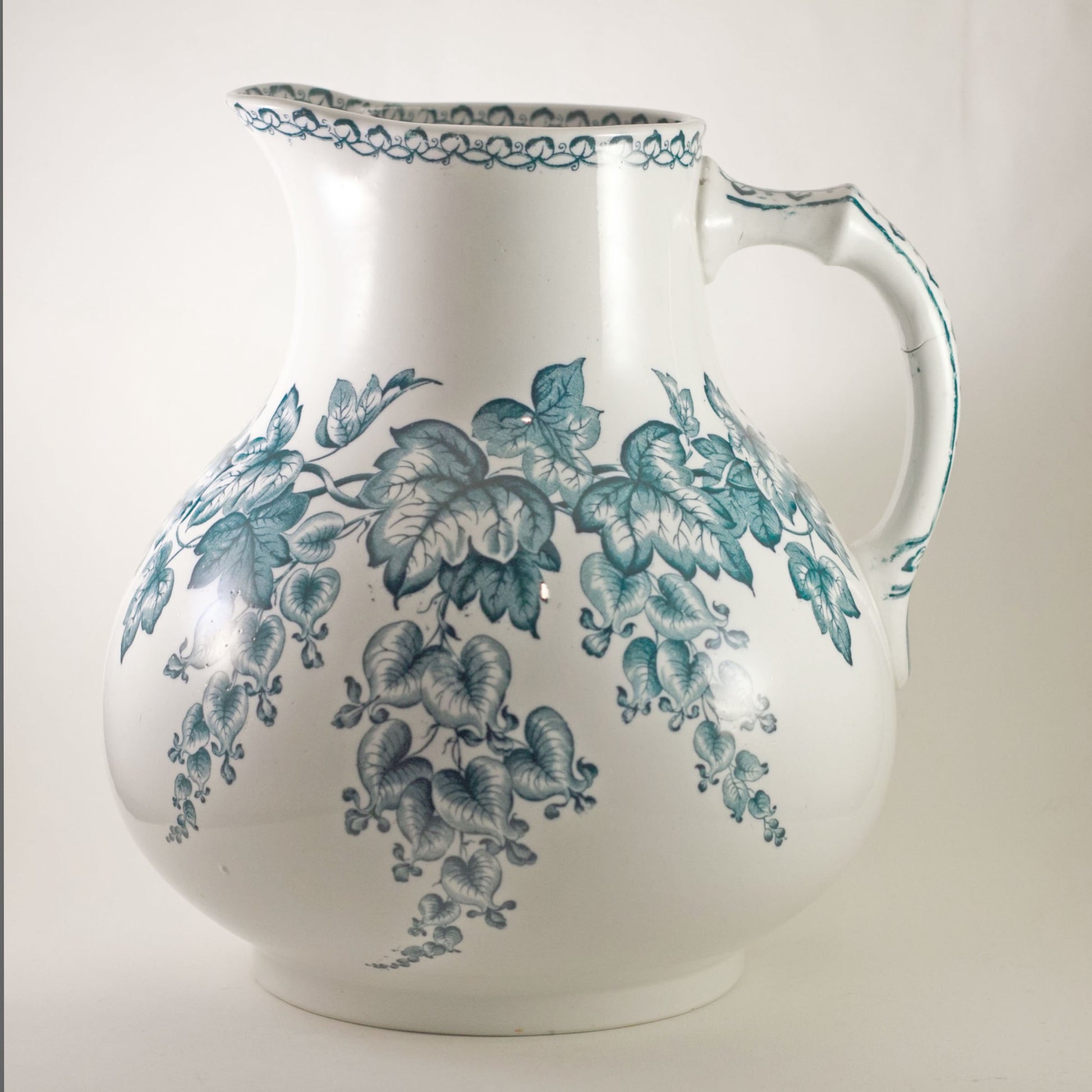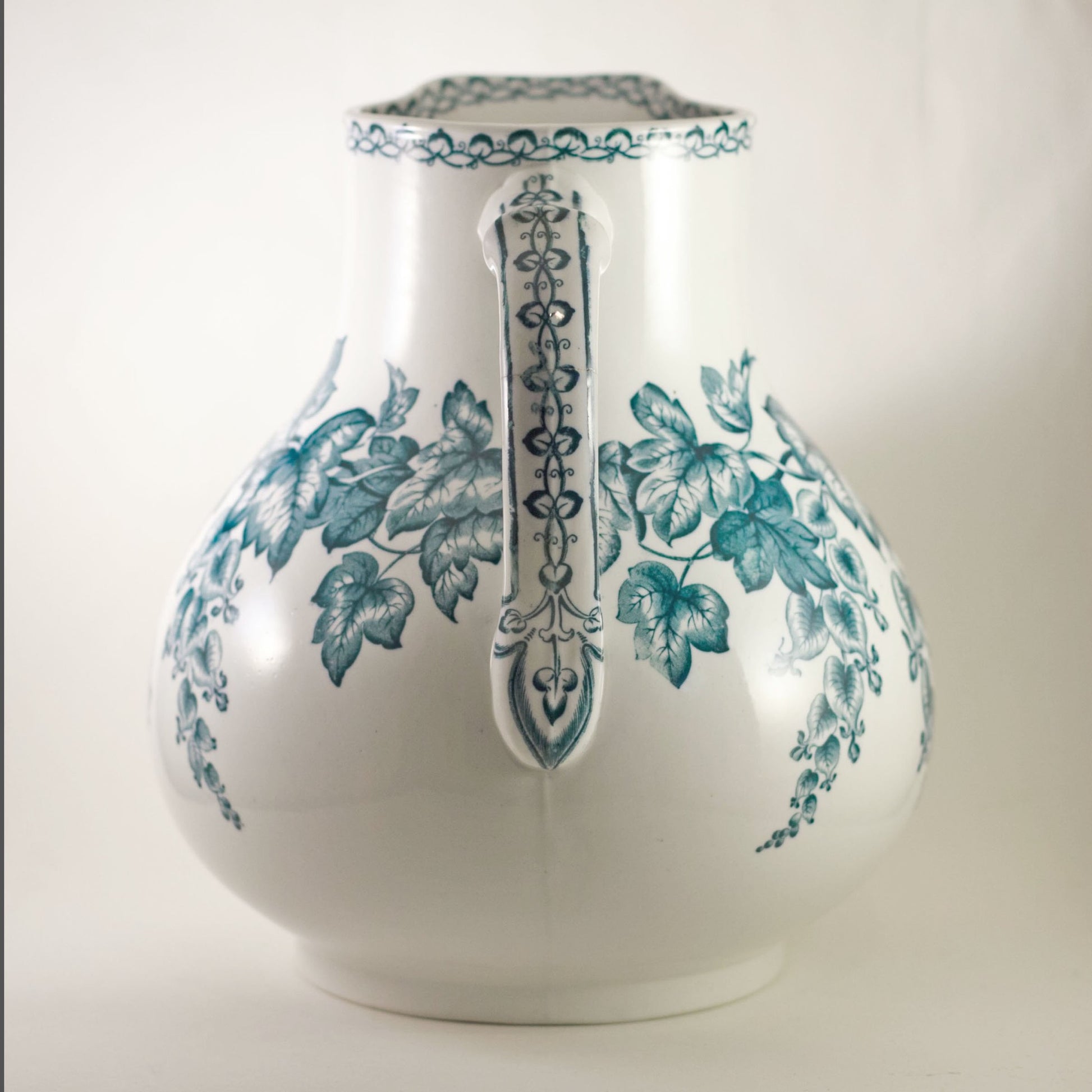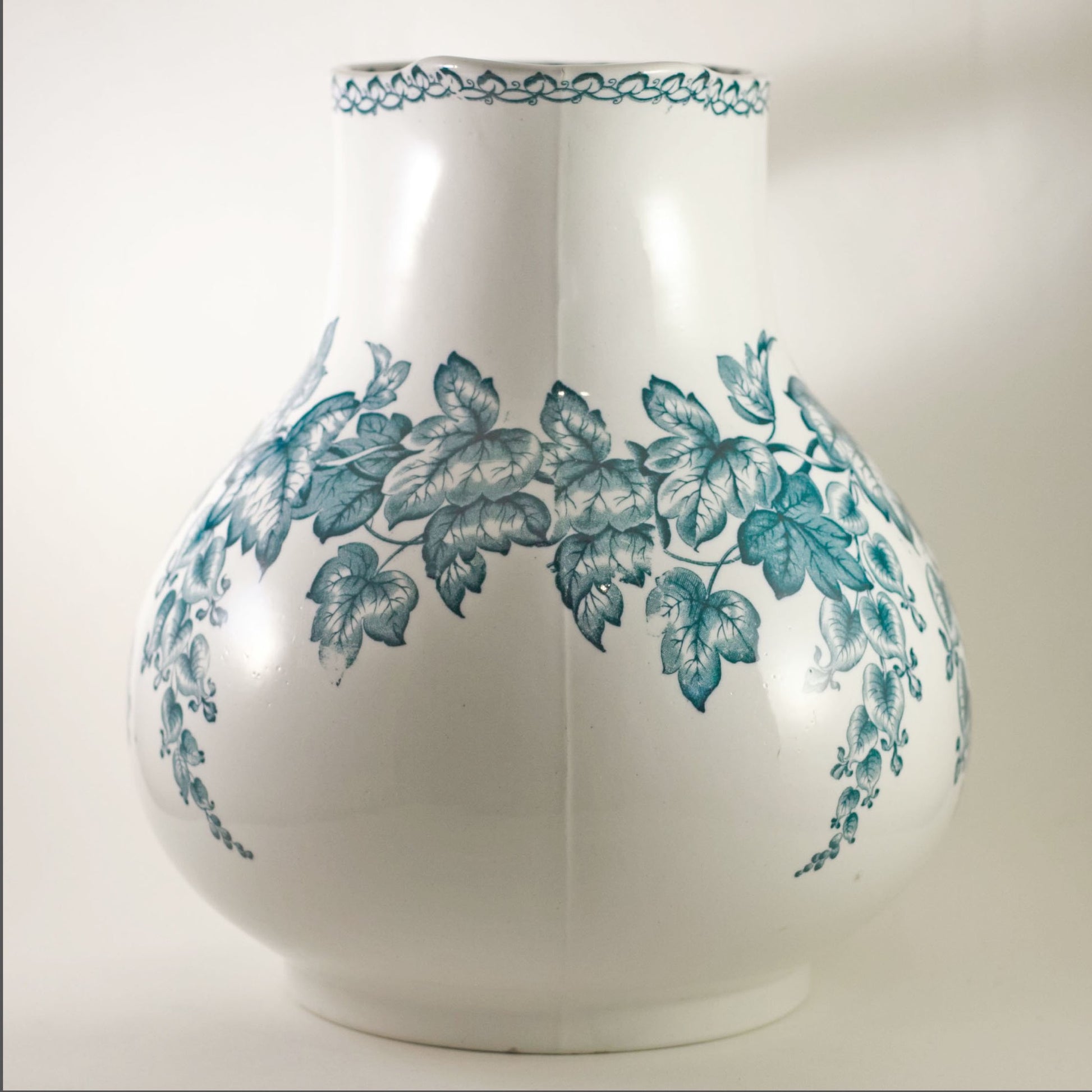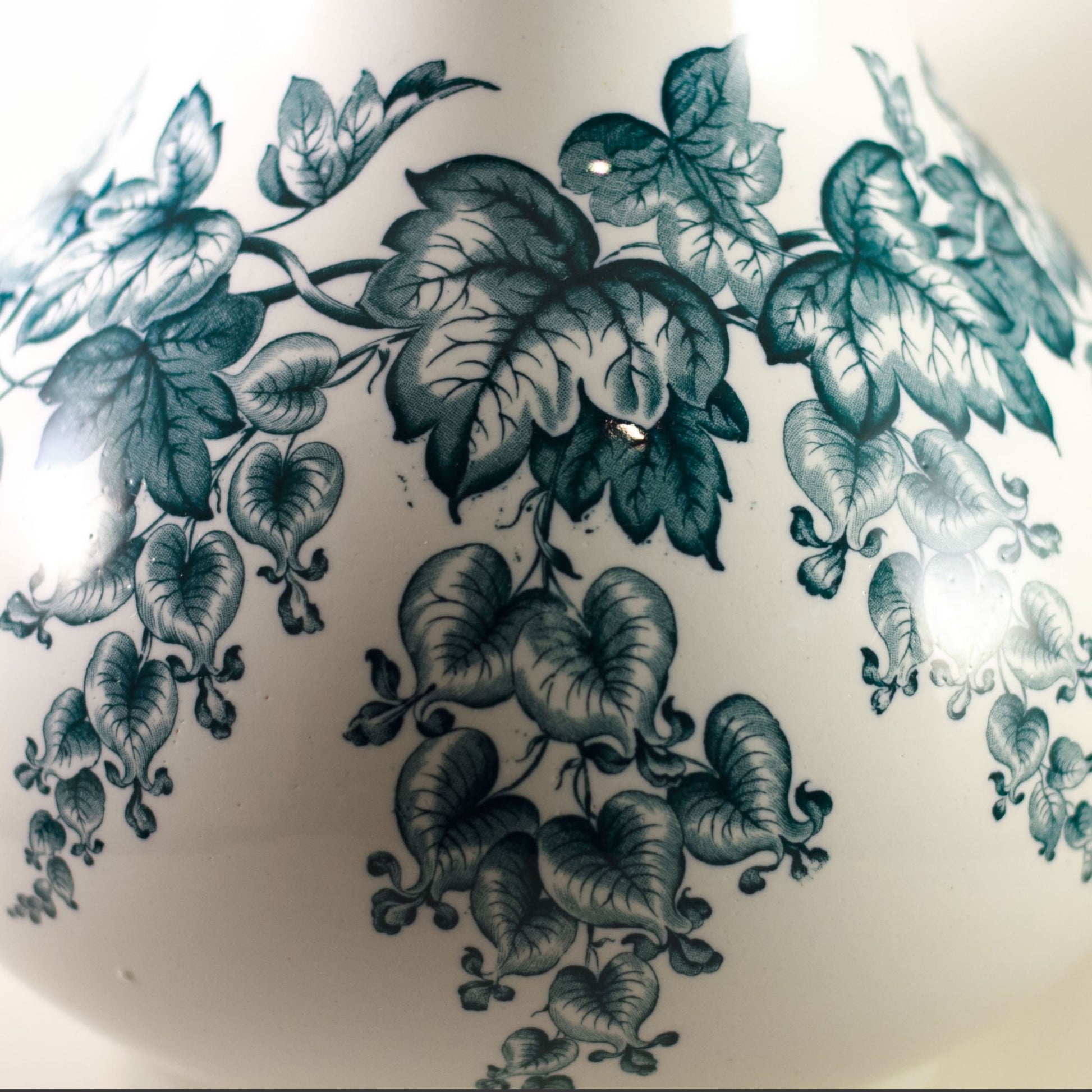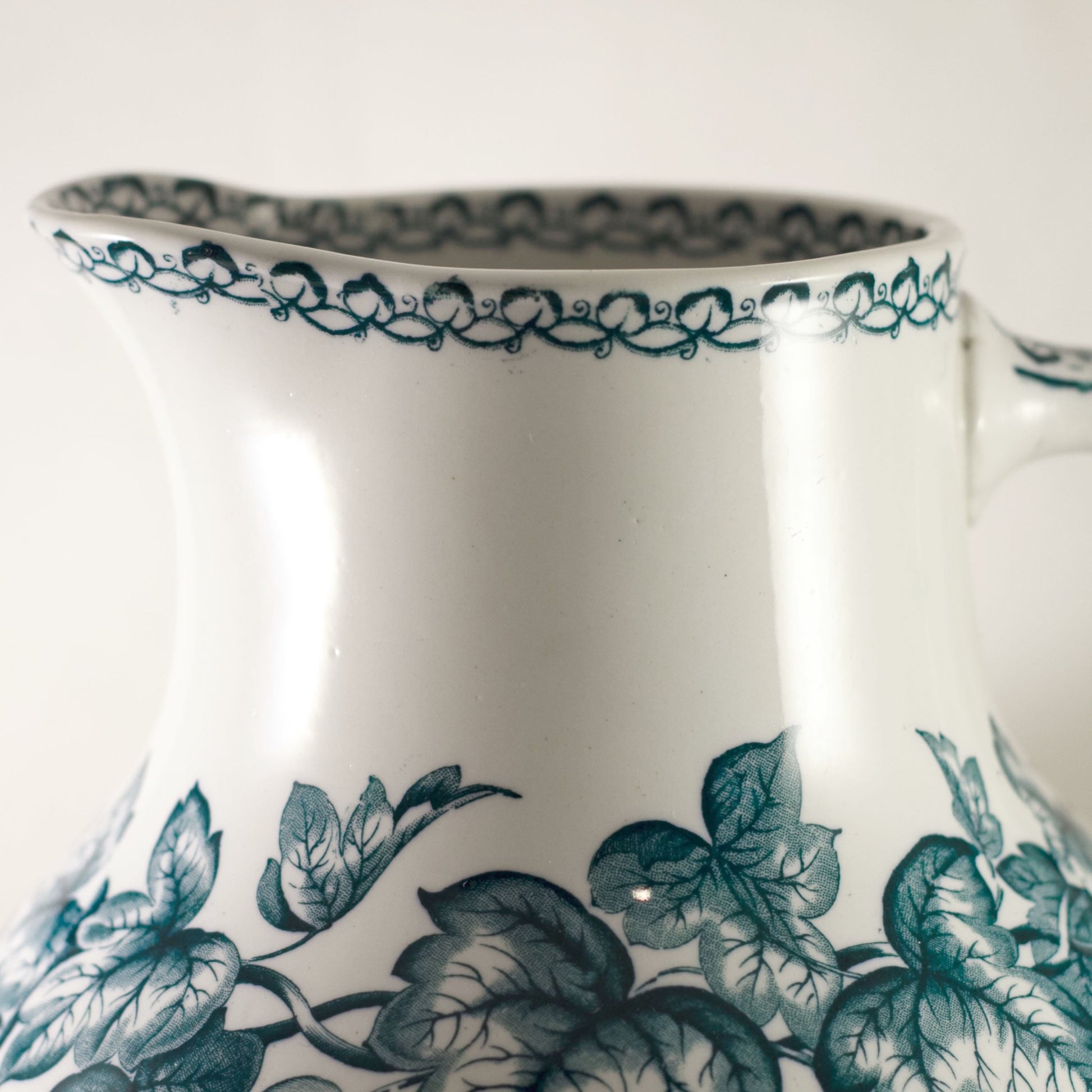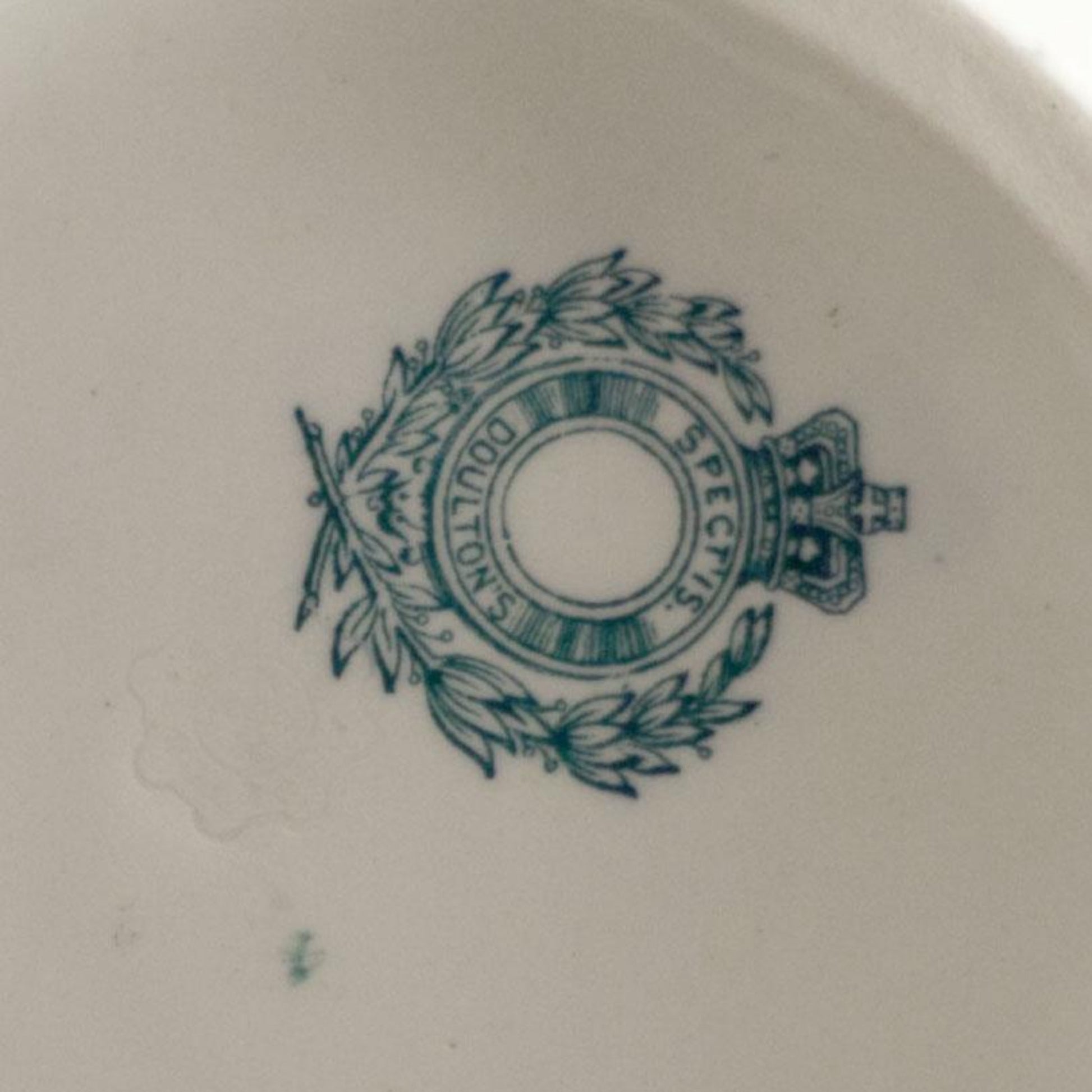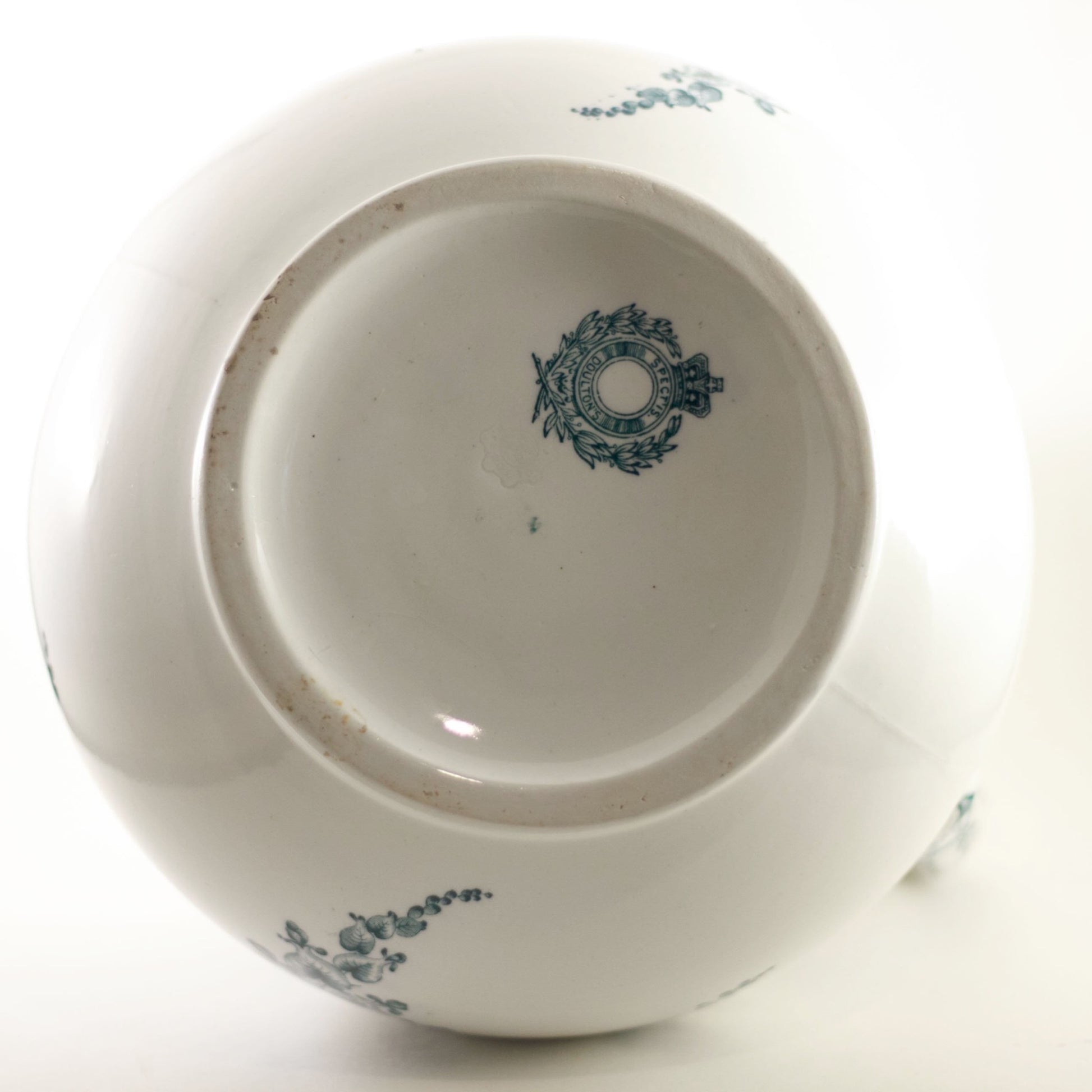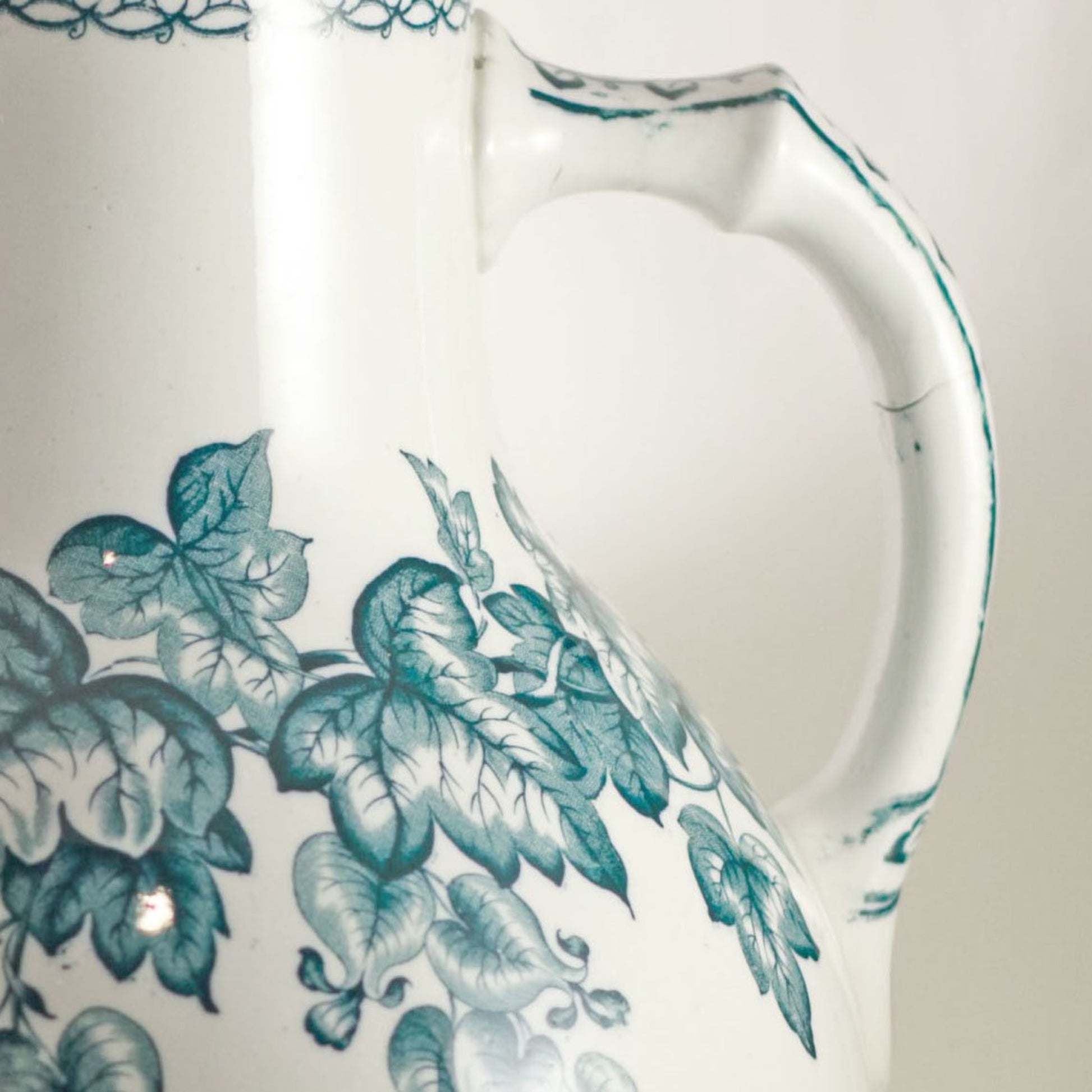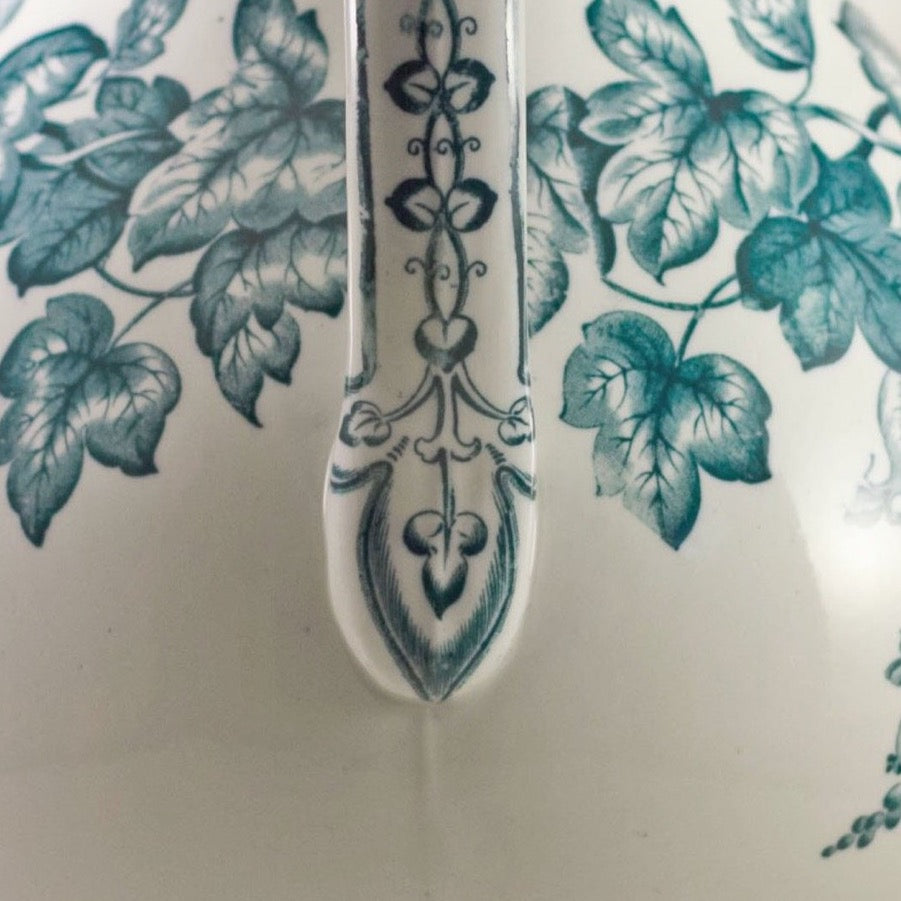Royal Doulton
DOULTON BURSLEM Transferware Pitcher in Green Trailing Vine Spect'is Pattern Circa 1882
DOULTON BURSLEM Transferware Pitcher in Green Trailing Vine Spect'is Pattern Circa 1882
Couldn't load pickup availability
Low stock: 1 left
This wonderful LARGE ANTIQUE PITCHER is an early piece by Henry Doulton of Staffordshire, England. The large ball pitcher is beautifully decorated in the SPECT'IS trailing vine green transferware pattern.
The pitcher measures approximately 10 ½” tall and 9" wide at the largest part of the "ball." It is about 8 ¼ across from handle to spout. The pitcher is in very good condition with no chips or crazing, although there is a small crack encircling the handle about midway down as shown in the photos and a small area of the leaf design transfer that is faded--also near the handle. The faded transfer could have been from the glaze process. Although the crack or faded leaf do not detract from the beauty of the piece, the price has been adjusted accordingly.
The marks and pattern date the piece to 1882, not long after Henry Doulton acquired the Pinder, Bourne & Hope factory in Burslem. Although the piece is not marked with Pinder, Bourne & Hope, the mark features a sphere surrounded by a laurel wreath below a coronet, which was used by Pinder Bourne. When Doulton first acquired Pinder Bourne, they continued to use the Pinder Bourne mark for successful patterns, sometimes with or without modifications to reflect Doulton. The mark also includes the pattern name, another feature used by Pinder Bourne.
Additionally, the piece has the circa 1882 standard impressed mark used by Doulton on earthenware made at its Burslem factory. The piece is not marked England, which dates it pre-1891.
This lovely pitcher would be a great addition to someone's farmhouse and French country decorating!
About Royal Doulton: Royal Doulton started as a partnership between John Doulton, Martha Jones, and John Watts in London. The company specialized in making stoneware articles, including decorative bottles and salt glaze sewer pipes. With the retirements of both Jones and Watts, the company took the name Doulton & Company in 1853. The business later passed to John’s son, Henry.
In 1871, Henry launched an art pottery studio and worked closely with the Lambeth School of Art to employ more than 300 artists. The painted earthenware became known as Lambeth Faience. In 1882, Henry expanded the company and purchased the small factory of Pinder Bourne in Burslem, Staffordshire to gain entry into the region known as “The Potteries.”
The Royal Family, including Queen Victoria were early admirers of Doulton ware, ordering vases for Windsor Castle and knighting Sir Henry Doulton, the first potter to receive this honor. In 1901, King Edward VII sold the Burslem factory the Royal Warrant, allowing the company to adopt new markings and a new name, Royal Doulton.
We ask that when making your purchasing decision that you consider the photos as part of the item's description.
We ask that when making your purchasing decision that you consider the photos as part of the item's description.
We do our best to provide you within the written description as much information, whether it’s the history, manufacturer, or condition, for each item we sell.
We also recognize that a “picture is worth a thousand words” and ask that you view the photos we provide closely. Often, a photo can be more effective than a written description when determining if an item will meet your needs and satisfaction.
If you need additional information on this or any item, please do not hesitate to reach out.
Share this listing.
